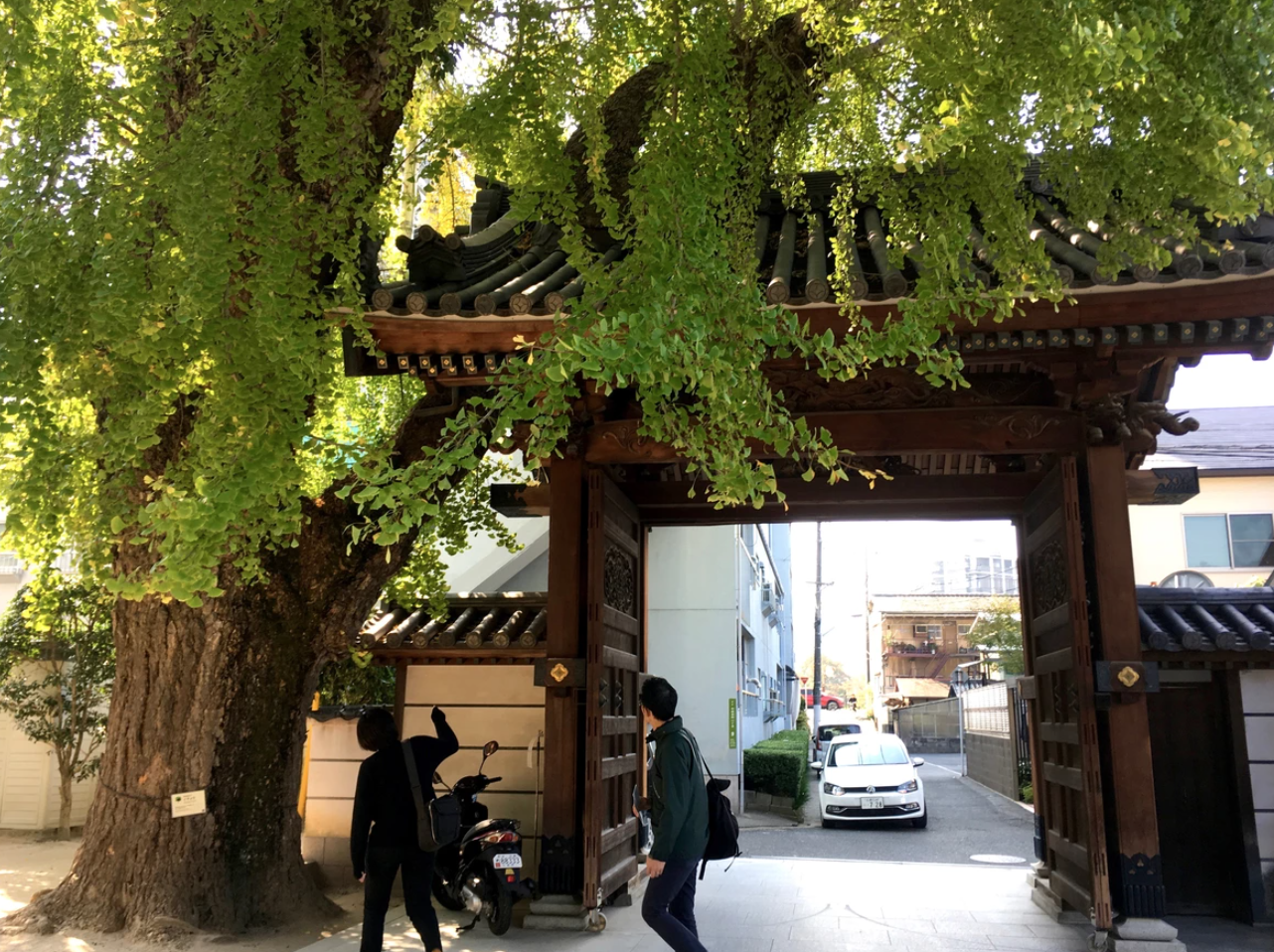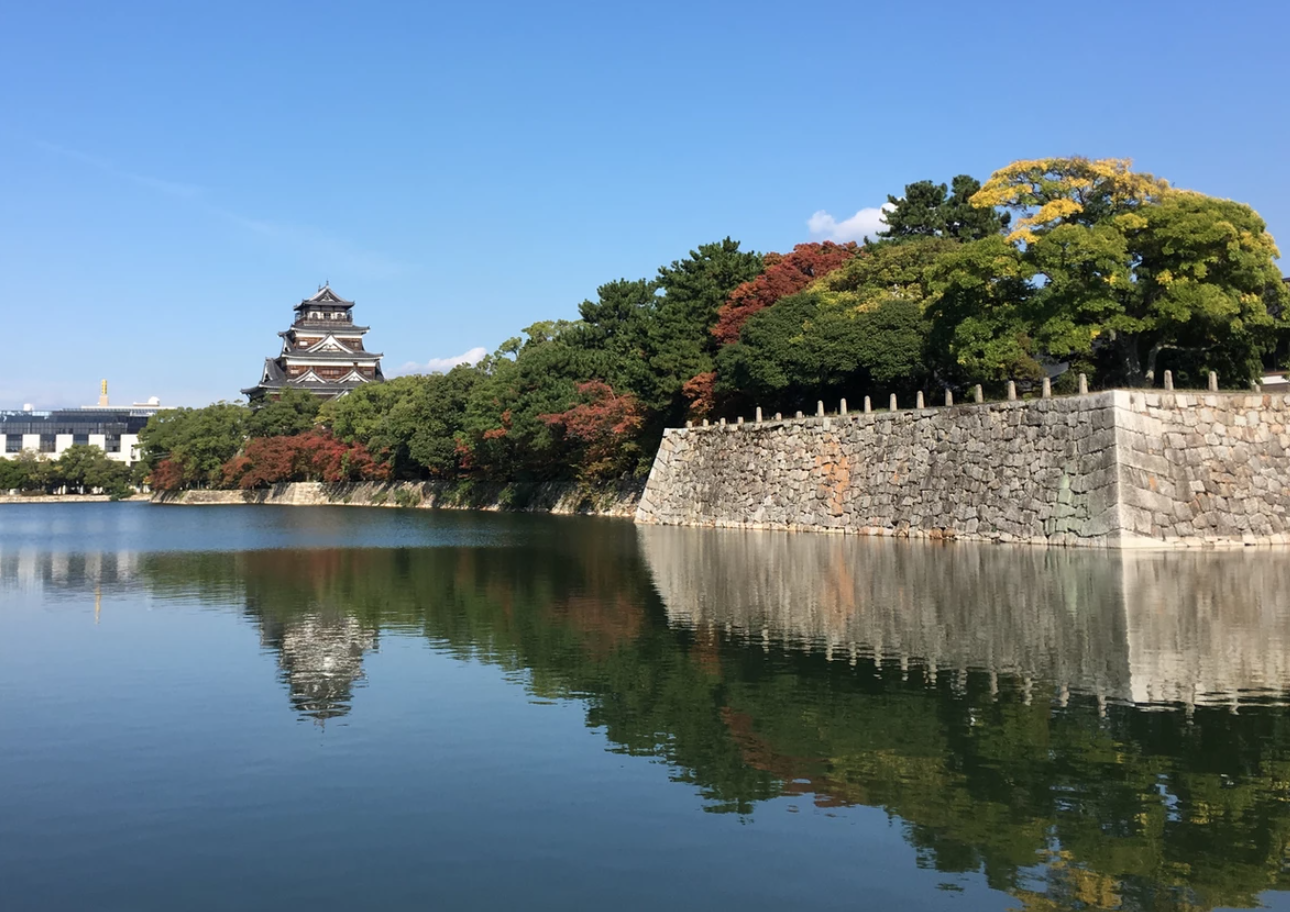A Familiar Town.
By Annelise Giseburt ‘16, UNITAR, ANT-Hiroshima, and Green Legacy Hiroshima (2016-2018)
There was one main reason I wanted this Fellowship: to live in Hiroshima. The city instantly captivated me when, as a college third-year, I visited for two days with my study abroad group. Dusk was falling as our bus rolled across rivers into the city, and by the time my friends and I ventured out to try to find the multi-story building filled with okonomiyaki shops, Okonomimura (we only made it to a shop across the street from the Mura, thinking we’d arrived), it was totally dark. We played drinking games that night, and I almost cried laughing. Going to breakfast on the hotel’s 15th floor the next morning, I saw the Peace Park stretching out before me and at its tip the A-Bomb Dome. My stomach dropped.
I did everything tourists normally do in Hiroshima, but saying I saw it all could not be further from the truth. I left with a gut instinct that I had to live here, that I wanted the kind of familiarity with the city that only comes with time and unending curiosity. More than just a conceptual notion of Hiroshima, I wanted something concrete. In that spirit, here are some of the places that have endeared themselves to me since I hopped off the Shinkansen on August 16, 2016.
Obscura Coffee: One of my goals, set pre-arrival, was to find “the Slow Train of Hiroshima.” After half a year of searching, I’m not sure such a place exists. However, there are other, different-but-still-good coffee shops here. Obscura holds a place in my heart because I spent hours on end reading the Japanese translation of Harry Potter there when I first moved, before I managed to make friends. The shop aesthetic is cool and slick, right down to the baristas.
I don’t linger as often these days, since I discovered the takeout menu trumps the in-shop menu in both quantity and price and since I pieced together a bustling social life. However, when I went with friends recently, one asked if I knew the barista, and when I said, “No, why?” he replied that we seemed close. Maybe because Obscura and I have history.
The sun sets over Chūō Park. (December 2016)
Chūō Park, the riverbank: Speaking of the early days, I spent a fair chunk of time alone in Chūō Park. Another naive goal of mine was, based on my favorite Tokyo hangout, to find “the Yoyogi Park of Hiroshima.” Again, nonexistent, but Chūō Park has its own charm. Before finding my permanent apartment, I stayed at a place in Honkawacho, across the river from the park. After days spent searching for life’s banal necessities and, almost more importantly, battling the August heat, I would creep out of my temporary home again at day’s end to go watch the sunset. The Hiroshima sky can put on a show. I don’t usually lead such a romantic lifestyle, but again, when you have no friends…
I try to make friends with a cat living in the Park. (February 2017)
The walk to work: So then I moved to my current apartment, about 20 minutes south of the first place. To get to the UNITAR office from my apartment, I make a beeline for the riverbank then head north. The walk takes me along the length of the Peace Park, but across the river, and past the A-Bomb Dome. In December there’re Christmas lights, in spring plenty of cherry blossoms, and every day I see tourists snapping photos and checking maps. Other familiar sights include two love hotels, a shisha cafe, an Italian restaurant that for me epitomizes the sad state of Japanese pasta, and, if I’m lucky enough to see them, the cats who live in the bushes by the Dome. When I read Fumiyo Kōno’s manga Town of Evening Calm, Country of Cherry Blossoms, I was surprised to see a representation of a bridge I walk past every day, albeit with only one familiar building in the scenery spreading out behind it.
The stone tubs at Ho no Yu: I’m a big fan of Japanese onsen and public bath culture. When I first visited Japan after my first year at Oberlin, I stayed in a dorm with no separated shower stalls, just bathhouse-style showers and tub. The experience taught me a lot about body confidence, and I’ve been hooked on onsen since. In Hiroshima, the public bath Ho no Yu is great for two reasons: There’s a good coffee shop directly between it and the nearest streetcar stop, and it’s got outdoor stone tubs. The tubs hold two people comfortably, unless one is intent on going spreadeagle. I overheat in onsen within two minutes, so these tubs are perfect for sticking every appendage available out of the water in an attempt to catch a cool breeze. I hook my neck on the stone rim, sadly knowing it’ll get sore eventually, and stare at the sky. A homie percolating next to me in the tub is a bonus.
Lopez Okonomiyaki: Aside from the taste and the general culture surrounding them, my favorite thing about okonomiyaki is that I feel full after only eating half of one but damn if I don’t keep going. Okonomoyaki is one of those foods where “You’ll have to roll me home” jokes are sure to be made after the meal. These days, my favorite shop is Lopez — jalapeno and squid on an already solid niku-tama-soba is a winning combination. All the seats at Lopez are counter, the whole counter is a grill, and that grill will keep your okonomiyaki almost excessively toasty for the whole meal. The first time I went to Lopez involved an unparalleled nosh-fest of beer, chorizo, and, of course, that fateful okonomiyaki.
A group effort to make coffee at ANT. (November 2016)
Lunch at ANT-Hiroshima: I’m one of those people who love routines, and there’s a great one at ANT: lunchtime. After a whirlwind Monday through Thursday at UNITAR, I skip off to ANT on Fridays. When noon rolls around, I pop out to go buy lunch, usually a bento from a place called Inaka around the corner; I bring my long-awaited bento back to the office. The ANT staff, generally around four of us, eat together, and I strategically work my way through the bento so that the last bite is karaage. When we finish eating, it’s time for coffee and sweets, which are always in great supply. Once, one of the pour-over coffee packages broke, leading to a three-woman brewing effort using a sieve and some chopsticks in an attempt to not waste precious beans. We had a laugh, calling our desperate measures “the traditional Japanese brewing method.”
I’m not sure if it’s my clear coffee addiction talking, but by this point in the day I’m usually perfectly happy, and whatever stress and nonsense I carried into the office with me has evaporated.
The ginkgo at Anrakuji. (November 2016)
Anrakuji: The first time I visited Anrakuji was in early November. It was a Friday, and my coworker (and friend!) Kuniko invited me to make the rounds of some hibakujumoku with her and a professor from Tokyo. We saw many trees, but this temple’s ginkgo stood out to me. It was simply beautiful, and the whole atmosphere of the temple radiated elegance and calm. At the time, I only had an inkling of the ginkgo’s and temple’s history.
Inspired by the tree tour — and by the lack of depth in my summary blog post for ANT — I literally cast an eye around the ANT office, looking for a resource to give me some hibakujumoku history. I picked up Yūko Ishida’s Meeting Hiroshima’s Trees, an easy read that even my less-than-stellar Japanese could handle. Easy read by no means means lack of depth though; through Ishida’s words, for the first time I saw beyond the physical trees and could feel what meanings hibakujumoku hold for people. I asked Ishida for permission to translate excerpts from her book and post them on ANT’s blog, and she kindly gave her permission. Naturally, one of the excerpts I chose was about Anrakuji’s ginkgo.
Hiroshima Castle
In Meeting Hiroshima’s Trees, Anrakuji’s ginkgo is used to introduce one hibakusha’s (a-bomb survivor) story and, more broadly, peace education in general. For previous blog posts about hibakujumoku, I visited the trees I was writing about to take photos and to make sure my translation was reflecting their actual visage and surroundings. I followed the same process for Anrakuji, but this time I was tracing a person’s footsteps rather than poking around a tree. After crossing Kōhei Bridge, I stood on the riverbank, then walked to the temple, where the bare ginkgo was waiting — Once the leaves have fallen entirely, only the withered-looking branches remain. Although it looks desolate, the tree is still living, and in April new shoots will bud again. I tried to see the tilt in the temple’s pillars and looked up to try to find the ginkgo’s scars.
Eating Okonomiyaki with former Shansi Fellow Lisette
Floating lanterns on the memorial day of the atomic bombing








